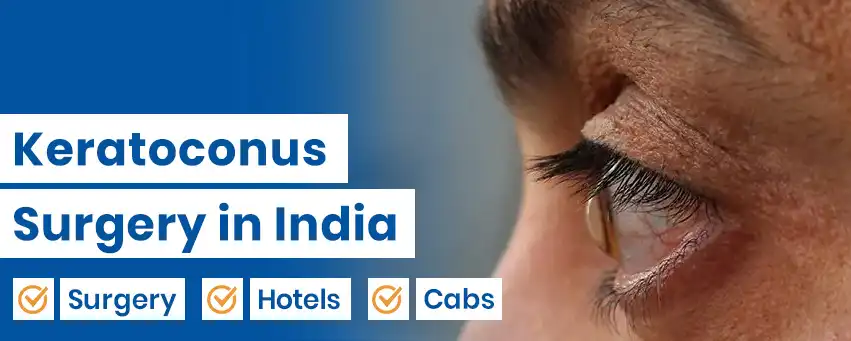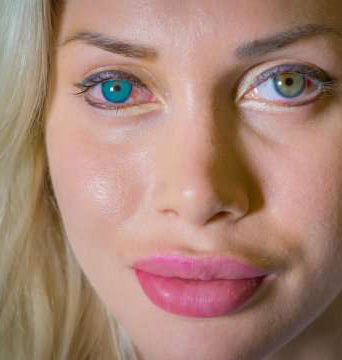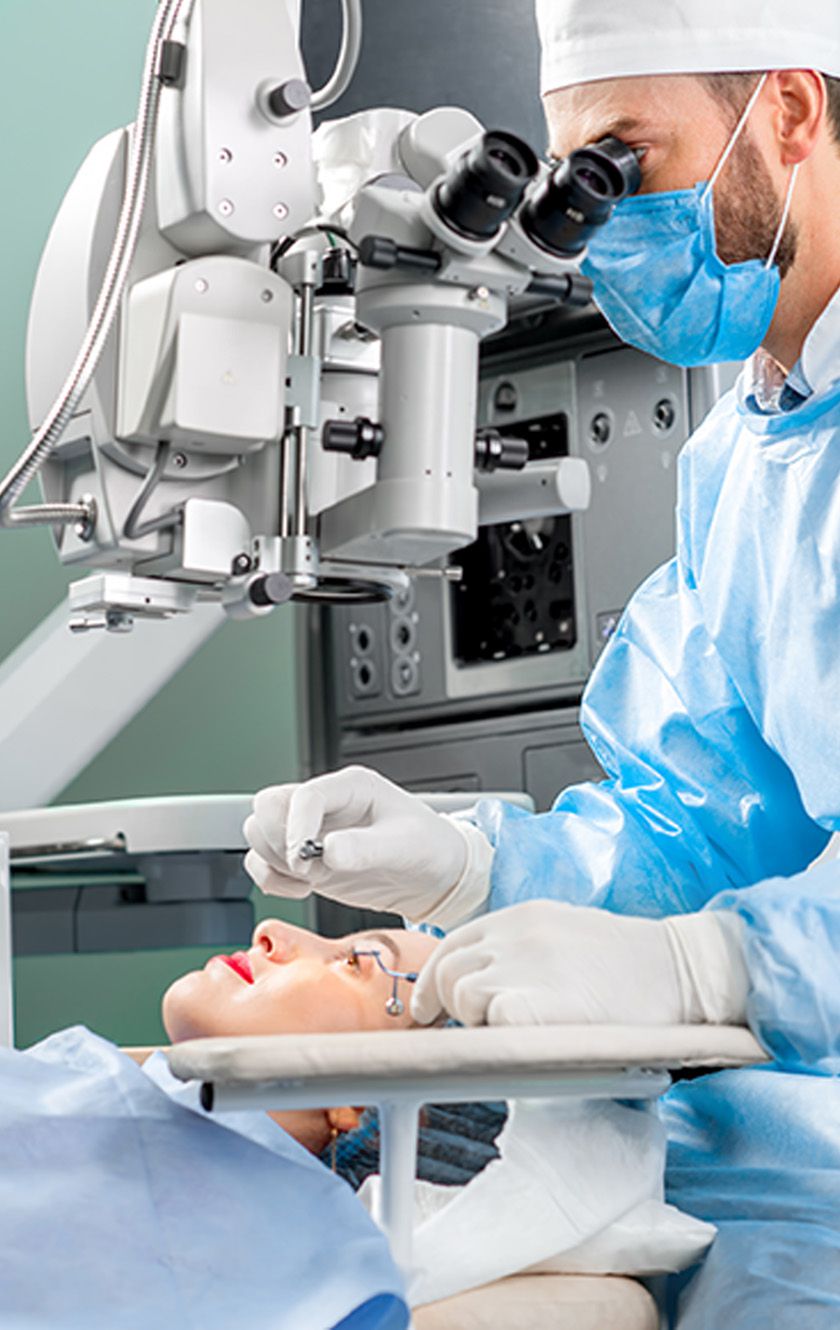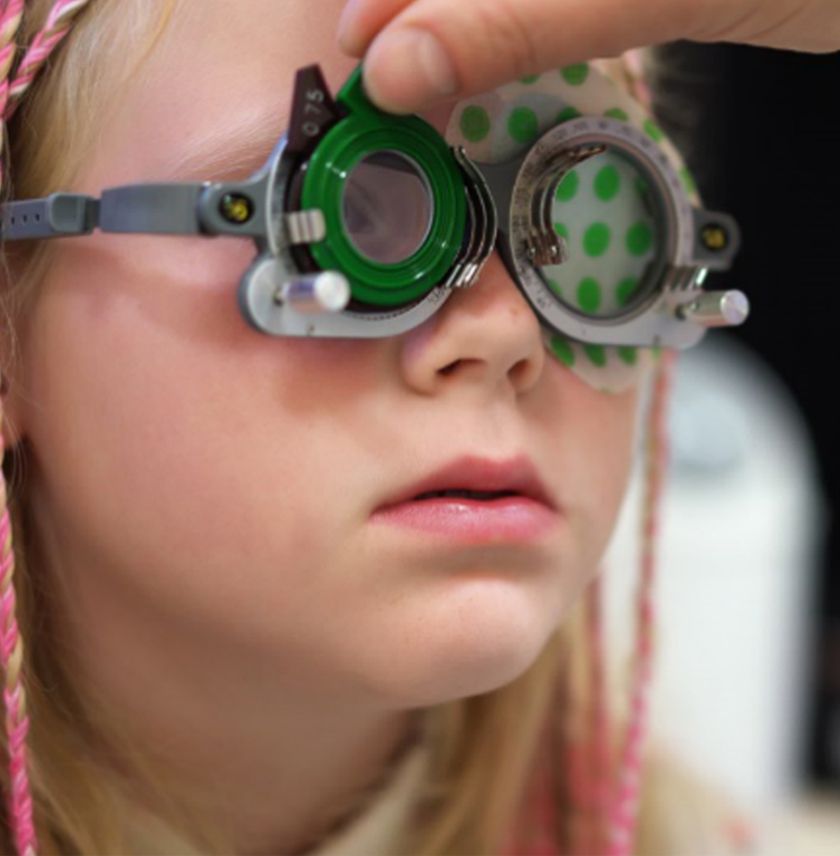

Keratoconus is a relatively rare eye condition. It typically occurs in people between their early 20s to mid-30s. It can happen to both men and women. People of any ethnicity and race can develop the eye condition. This disease gradually upscale and worsens with time, and it may take ten years old more to develop severe vision issues. It is not a fatal or life-threatening condition. However, delay in treatment or leaving it untreated can make it challenging to lead an everyday life.
In Keratoconus, the cornea gets affected and interferes with the sight. It can lead to many other complicated eye conditions, such as myopia. However, there is nothing to worry about. It is curable. Various treatments are available, from medicinal and external aid to surgical intervention. So, if you want to know more about this eye condition, keep reading. Here, we will discuss everything you need to know about this eye condition. That includes Keratoconus surgery in India, causes, symptoms, diagnoses, treatments, and more.
Before you learn more about the eye disorder Keratoconus, let's start with the basics. Let's understand what it is first. It is a progressive and non-inflammatory eye disorder. It is a degenerative condition of the cornea. Here, the paracentral or central corona starts thinning. Then, it bulges out, causing vision distortion and blurry vision.
In Keratoconus eye disorder, the corneal collagen of the eye starts thinning. In addition, this collagen is the tiny fiber of protein that holds the shape of the eye. When collagen starts thinning, it cannot maintain the shape of the eyes. Then the eyes start taking a cone shape. Due to this reason, this eye condition is often referred to as cone-shaped cornea disorder. It mainly affects both eyes, where one gets more severely affected than the other. However, in some cases, it can only affect one eye.
The cause of the eye disorder Keratoconus is still unknown. According to experts, it can happen due to genetic reasons. But no evidence can prove this claim. Also, experts suggest several factors that can contribute to the condition. This plays the role of risk factors to develop Keratoconus. Here are some of them listed below:
This might be found in your family history of Keratoconus. Then, your risk of developing this eye disorder may be higher.
Several environmental factors also increase the risk of Keratoconus. Vigorously rubbing eyes, exposure to certain chemicals, and so on are some of the elements.
Underlying eye problems and ENT problems also increase the risk of Keratoconus. Marfan syndrome, down syndrome, sleep apnea, and asthma are some of them.
Keratoconus eye disorder is a progressive degeneration of the cornea. It has several symptoms that indicate you need medical assistance. However, the symptoms become severe with time.
Early signs of Keratoconus include-
You may also experience later-
The diagnosis of Keratoconus is completely possible. There are multiple diagnosis options available to identify the condition of this disease. Here are some of them discussed below:
Diagnosing the Keratoconus condition helps to determine the most suitable treatment. Early diagnosing helps with early keratoconus surgery in India.
The treatment plan for keratoconus surgery in India depends on two major factors:
i) The severity of your eye disorder and
ii) How fast the condition is degenerating. Currently, a wide range of treatment options are available for this eye condition. Those are contact lenses and eyeglasses to corneal crosslinking therapy. Depending on your condition, your doctors can suggest a specialized treatment for you.
Below, we will discuss different treatment options for the eye disorder Keratoconus:
Eyeglasses can be a good option for treating blurry or distorted vision. This can be applicable when detected in the early stages of Keratoconus. Soft contact lenses can also help in this case. However, people need to check and change their prescribed glasses or lenses as the condition progresses.
Contact lenses provide a sustainable solution for the Keratoconus disorder for a long time. Different types of contact lenses can treat or correct Keratoconus condition in various stages. For instance, hard contact lenses provide better results. It is a good option for more advanced Keratoconus conditions. Here, soft lenses may work in early stages but not later. However, the rigid surface of the lens might bother you very much. Then, your doctor can suggest piggybacking the hard lens with a soft lens. They may also tell you to get a hybrid lens. The ring is smooth but the center is ridge in a hybrid lens. A Scleral lens may also be used for keratoconus. The scleral lens for keratoconus is specially designed to fit the cone-shaped lens.
Corneal cross linking surgery is the subsequent option for Keratoconus surgery in India. Here, glasses or contact lenses fail to offer vision correction. Crosslinking therapy can provide better results. In this therapy, the affected cornea is saturated in riboflavin drop with UV ray treatment. It helps to freeze the cornea in its current shape. It prevents progressive degeneration due to Keratoconus disorder.
Corneal cross linking keratoconus surgery is prescribed by diagnosing your condition and how fast it is degenerating.
Keratoconus symptoms can be managed with vision correction treatments. The treatments are scleral lenses, hybrid lenses, glasses, and Corneal cross linking therapy in its early stages. You may face severe symptoms of this eye disorder. Their surgical intervention is a must to restore normalcy.
Some severe symptoms that indicate you must opt for keratoconus surgery in India are –
Two primary surgical techniques that can help with correcting severe Keratoconus –
Below, we will learn about each of these treatment methods briefly-
ICRS, or Intrastromal Corneal Ring Segment, is ideal for mild to moderate Keratoconus. Your doctor may suggest an ICRS treatment if your condition is not too severe. In this surgical intervention, small synthetic rings are inserted in your cornea. It is done to flatten the bulging-out cornea. This improves vision. It also helps to fit contact lenses better. For optimal results, sometimes doctors combine the Intrastromal Corneal Ring Segment. It is combined with Corneal cross linking therapy.
Corneal transplant keratoconus surgery in India is recommended when your symptoms are unbearably severe. By severe, it means scarring cornea. It also can be an extremely thin cornea. Corneal transplant is also known as keratoplasty. Here, the damaged or affected corona tissues are replaced with the healthy cornea tissue of the donor. Depending on your Keratoconus condition, a doctor can suggest a complete or partial transplant. It is done to restore your vision and eye condition.

Experience and expertise are the first criteria when choosing an eye surgeon. An experienced eye surgeon helps you provide the expected results. CureIndia has the best eye surgeons in India to help your eye recover:
Dr. Suraj Munjal is the best eye specialist in Delhi NCR. He has done many refractive surgery, keratoconus surgery, and cornea transplants with a wide variety of complicated cases. He also has expertise in all types of LASIK eye surgeries.

Dr. Suwarn Chetan is an ophthalmologist specializing in Occuloplasty and LASIK surgeries. He is one of the top eye specialists in India for cataract eye surgery, refractive eye surgery, and pediatric ophthalmology.


Dr. Sumit Gupta is a specialist eye doctor in Gurgaon, India. He has proficiency in Cataract and vitreo retinopathy. He is also an expert in LASIK eye surgery with a high success rate.

Various treatments are available for keratoconus. Surgeries like intracorneal ring segment and keratoplasty (Corneal transplant) could help provide you relief from the condition. Prescription contact lenses or glasses and therapies like corneal crosslinking are hugely beneficial. It helps in managing the symptoms of this eye disorder.
However, Crosslinking surgery is the most widely performed treatment for this disease. Keratoconus treatment recovery period is at least one week (3 to 5 days). You may feel some pain in your treated eye after the treatment.
The pain usually goes away after one day. But some patients can also experience this a little longer. The feeling of pain and discomfort in the treated eye also varies from person to person. After one day of the surgery or treatment, a person would be able to resume their daily routine. But they should avoid strenuous activities where their face can be injured. Finally, patients with this eye disease should continuously monitor its status. So that they can take necessary steps if the condition becomes severe.


Get the Eye color you've always dreamed of
Connect Today
Opt for successful eye color change surgery
Plan Surgery
Remove glasses with SMILE LASIK
Get Cost